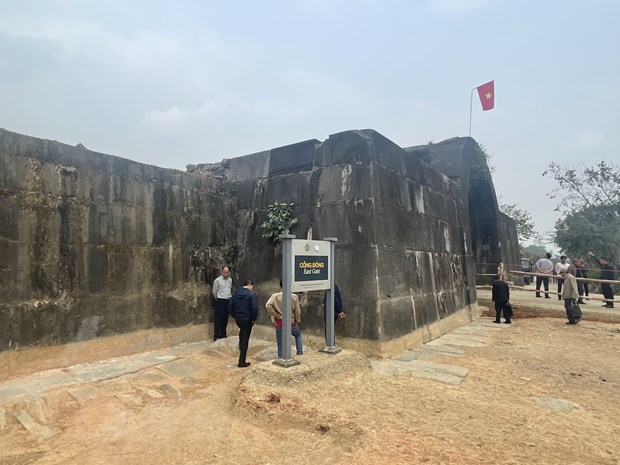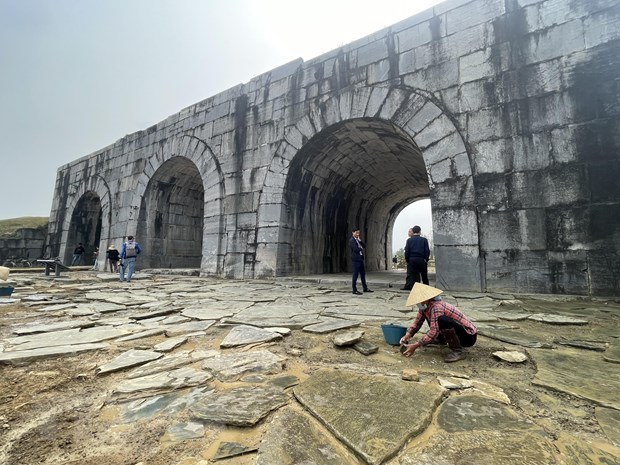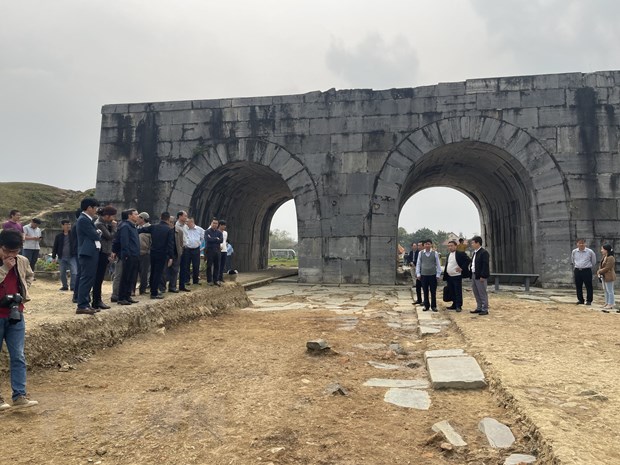HÀ NỘI The ruins of the Hồ Dynasty Citadel, a fortress in central Việt Nam built during the Hồ dynasty between 1400 and 1407, has recently undergone excavation, leading to the exposure of gates and walls.

The structure of the walls in the ruins of the Hồ Citadel. VNA/VNS Photo Hoa Mai
The excavation in Thanh Hóa Province also uncovered vestiges of the Royal Road within the inner city, including green stone embankments and slate paving in the middle of the South Citadel.
It has also revealed details of relics such as rectangular bricks, decorative leaves of the Trần-Hồ dynasty period, flat tiles, grey trough curved tiles in the Lê dynasty period, and ceramic pieces of glaze from the Trần-Hồ dynasty period and Early Lê era.
Some clusters of stone cannon-balls and bullets were found near the North and South gates.

Excavating the inner and outer space of the four walls. VNA/VNS Photo Hoa Mai
The discoveries demonstrate the unique characteristics in the use of large stone slabs in the Hồ Citadel.

Officials study the excavations at the ruins of the Hồ Citadel. VNA/VNS Photo Hoa Mai
The Institute of Archaeology and the World Cultural Heritage Conservation Centre of the Hồ Dynasty Citadel reported initial findings on four city gates of the ruins of the Hồ Citadel, a UNESCO World Cultural Heritage, at a joint conference.
Đặng Văn Bài, vice chairman of the National Council of Cultural Heritage, highlighted the significant contributions of the excavation to the understanding of the structure and construction techniques of the Hồ Citadel gate area throughout historical periods.

A conference is held to reveal the results of the excavation. VNA /VNS Photo Hoa Mai
Thanh Hóa Province will focus on the overall planning and excavation of the South Gate of the Hồ Citadel to create a complete South Gate that will attract both domestic and foreign tourists. VNS
OVietnam